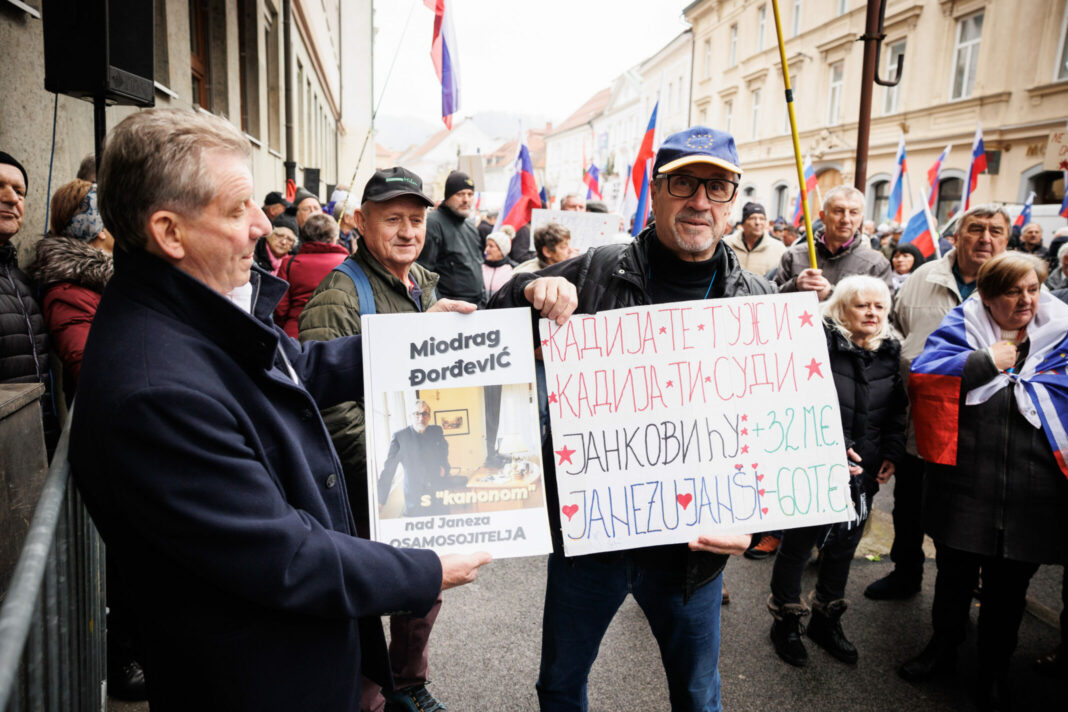By: Gašper Blažič
On Monday, February 10th, the trial in the Trenta case continued at the Celje District Court. It seems that the January hearing, during which the appraiser debunked the myth of the “worthless land”, left an impact. As previously reported, another hearing took place on February 17th, and the trial will resume on March 10th.
It seems our sources were right: the verdict declaring the accused – Branko Kastelic, Janez Janša, and Klemen Gantar – guilty had already been written and was ready to be announced on December 19th, 2024. However, it was not delivered for understandable reasons. Firstly, due to politics, as the position of Golob’s government is currently uncertain. On the other hand, the trial was also delayed by two protest rallies in front of the Celje court, although these did not bring much benefit to those hoping for a guilty verdict in the first instance.
A nervous judge
This was evident during the first February hearing when three civil engineers were questioned – one employed at Imos and the other two at Eurogradnje. This time, the presiding judge, Cvetka Posilovič, asked questions with great zeal, initially focusing on how the individuals communicated with each other and what their financial roles were. However, all three testified that they had nothing to do with financial matters. Attempts to prove the prosecution’s claim that the transaction between Eurogradnje and Imos was merely a sham did not bear fruit, turning the proceedings into a tedious exercise in nitpicking. At times, the judge even raised her voice.
GURS valuation is not a market standard
Branko Kastelic, the former director of Imos, explained his ordeal in this Kafkaesque process last week on Nova24TV. He refuted the allegation that the property was overpriced, stating that the price of nine euros per square meter was favourable at the time, and they considered the property a good investment, even as a long-term asset. Later, during bankruptcy proceedings, the land was sold for a price not much lower than the purchase price. It appears that the prosecution relied on the valuation of GURS (Surveying and Mapping Authority of Slovenia), which estimated the property at around 20,000 euros. This figure supposedly came from the GURS application, although comparisons with other properties in the same region showed that they were purchased at several times the GURS valuation. For example, agricultural land in the Grosuplje area was sold at a price one hundred times higher than GURS’s estimate.
The wheels started turning again
Kastelic also explained the different valuations provided by various appraisers. The first appraisal valued the property in Trenta at 110,000 euros, the second at 133,000 euros, and the third, conducted by Izidor Salobir, at 143,000 euros. Initially, the accused was optimistic since the 2014 investigation raised no objections regarding his conduct. The affair quieted down for several months, and he believed the case would not go to court. However, the bankruptcy of Imos marked a turning point. Stories began circulating that appraiser Breda Zorko had valued the property at 17,000 euros for the bankruptcy proceedings, which became the basis for the renewed prosecution of Kastelic, Janez Janša, and the former director of Eurogradnje.
By the way, the Trenta case stalled after 2014, but the “uncles from behind the scenes” used the Imos bankruptcy to propagate the myth that the purchase of Janša’s former estate caused financial difficulties for Imos – an outright lie.

